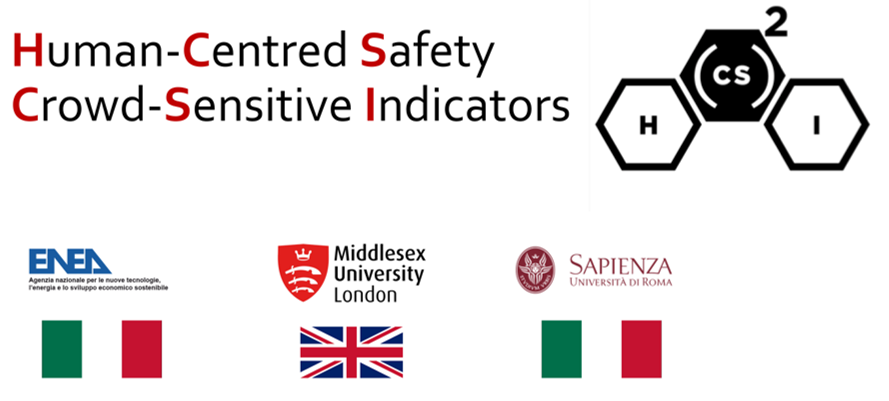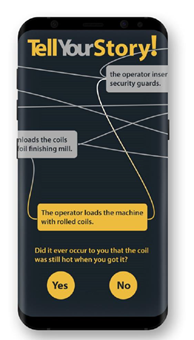
By Antonio De Nicola, and Maria Luisa Villani (ENEA research center, Italy)
The H(CS)2I project (Human-Centred Safety Crowd-Sensitive Indicators) aims to develop an ontology-based framework to gather and make interpretive sense of organizational performance, relying on the use of the Functional Resonance Analysis Method (FRAM).

The framework supports the construction of formal semantic representations of organizational knowledge finalized to run FRAM-based analyses. The project proposes a methodology that is expected to overcome the top-down theoretical assessment relying on constructivism-oriented artificial varieties of work, i.e. work-as-imagined (WAI), towards a bottom-up approach focused on normal operations, i.e. work-as-done (WAD). To achieve this purpose, the framework relies on a gamified approach for knowledge elicitation that in the end leads to the identification of safety performance metrics: the Human-Centred Safety Crowd-Sensitive Indicators, the H(CS)2I.
The approach is still under-development, in relation to a framework that is made up of 7 interacting phases, summarized as follows (Costantino et al., 2020a):
- Documentary knowledge elicitation. This stage is devoted to acquire information for the definition of the WAI instantiation.
- FRAM WAI modelling. The FRAM analyst builds the FRAM instantiation corresponding to the WAI through a software application (it could be FMV, or myFRAM).
- Gamified ontology engineering. This step focuses on the WAI information ingestion and enrichment in a ontology that forms the knowledge-based model at the core of the H(CS)2I framework.
- Creative re-design. An application called “Creativity Machine” (De Nicola et al., 2019) generates, according to predefined semantic rule patterns, a high number of FRAM model variants consistent with the analysed context (Costantino et al., 2020b).
- Mobile Participatory Crowd-Sensing (MPCS) and validation. MPCS is the knowledge collection mechanism that enables context-specific information to be collected directly from sharp-end operators. In this step, the process of knowledge elicitation related to the WAD instantiation is gamified and carried out through a mobile app.

- FRAM WAD modelling. The information collected by the individual operators is used by FRAM analyst to build the WAD instantiation.
- Safety assessment. A focus group including both blunt and sharp-end operators is coordinated by a FRAM analyst to examine the differences between WAD and WAI instantiations and to construct the H(CS)2I leading indicators, both those based on differences between aspects of functions and those on systemic semantic differences.
While the project is still under-development, several phases have been already accomplished and a case study is currently under development in a big pharmaceutical international company.
…Stay tuned in the project website for further details!
H(CS)2I project is co-funded by the Italian National Institute for Insurance against Accidents at Work (INAIL) and the UK Institution of Occupational Safety and Health (IOSH) under the 2018 SAF€RA EU funding scheme and involving:
- ENEA research center (ITALY), coordinator
- Middlesex University (UK), partner
- Sapienza University of Rome (ITALY), partner
References
- F. Costantino, A. De Nicola, G. Di Gravio, A. Falegnami, R. Patriarca, M. Tronci, G. Vicoli, and M. L. Villani. 2020a. Transition from Work-As-Imagined to Work-As-Done Processes through Semantics: an Application to Industrial Resilience Analysis. In B. Archimede, Y. Ducq, B. Young, and H. Karray, editors, Enterprise Interoperability IX – Interoperability in the Era of Artificial Intelligence, Proceedings of the I-ESA 2020 Conference – Tarbes, France, 17th-20th November 2020. Springer International Publishing, 2020a.
- F. Costantino, A. De Nicola, G. Di Gravio, A. Falegnami, R. Patriarca, M. Tronci, G. Vicoli, and M. L. Villani. 2020b Crowd sensitive indicators for proactive safety management: a theoretical framework. In Proceedings of the 30th European Safety and Reliability Conference – ESREL 2020 – Venice, Italy, 1st-6th November 2020, 2020b.
- De Nicola, M. Melchiori, and M.L. Villani. Creative Design of Emergency Management Scenarios Driven by Semantics: An Application to Smart Cities. Information Systems, 81:21 – 48, 2019.
- R. Patriarca, A. Falegnami, F. Costantino, G. Di Gravio, A. De Nicola, and M.L. Villani. WAx: an integrated conceptual framework for the analysis of Cyber-Socio-Technical Systems. Safety Science, volume 136, article 105142, 2021
